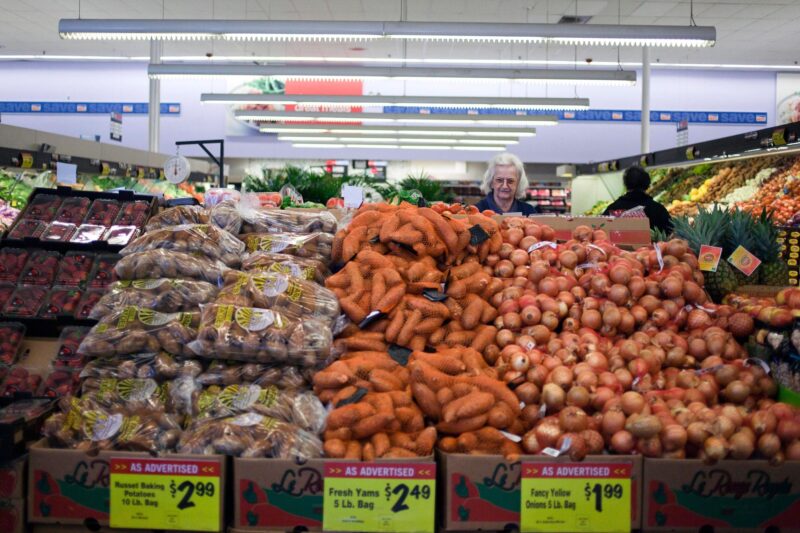Understanding Food Deserts and Their Impact on Communities
November 10, 2024

In today’s world, access to nutritious food is essential for maintaining good health and well-being. However, millions of people live in food deserts—areas where fresh, healthy food is hard to come by. Understanding what food deserts are, their causes, and their effects on communities is crucial to addressing food inequities and improving public health.
1. What is a Food Desert?
A food desert is typically defined as an area where residents have limited access to affordable and nutritious food. This lack of access usually manifests in neighborhoods where grocery stores offering fresh produce, meat, and dairy products are either scarce or non-existent.
According to the USDA, a food desert is identified based on two main criteria:
- Proximity to Grocery Stores: Many residents live more than a mile away from the nearest grocery store (or more than ten miles in rural areas).
- Economic Factors: The area often has a high proportion of low-income households, which makes it difficult for families to afford healthy food options even if they are available nearby.
Food deserts contribute to the cycle of poverty and health disparities that plague many communities, particularly in urban areas where economic investments are lacking.
2. The Causes of Food Deserts
Multiple factors contribute to the formation of food deserts:
- Economic Disinvestment: Many neighborhoods face economic challenges that result in a lack of investment from grocery store chains and other food retailers. As businesses close, it becomes increasingly difficult for communities to access food resources.
- Transportation Barriers: Inaccessible public transportation systems make it difficult for residents in low-income areas to travel to grocery stores located outside their neighborhoods. Without reliable transportation, people may rely on fast food outlets or convenience stores that offer limited healthy options.
- Urban Planning and Zoning Laws: Development policies can dictate the types of businesses that are allowed in certain areas. Zoning laws may favor fast food chains or convenience stores over grocery stores, further exacerbating access issues.
- Socioeconomic Factors: Communities with higher poverty rates and lower education levels often experience a lack of grocery options, as food retailers may not see a viable market for their products in these areas.
Understanding these underlying causes is vital for developing effective solutions to combat food deserts.
3. The Impact of Food Deserts on Communities
The existence of food deserts affects communities in several key ways:
- Health Issues: Limited access to nutritious food is directly linked to increased rates of obesity, diabetes, and cardiovascular diseases. Studies show that children in food deserts are more likely to suffer from diet-related health problems due to inadequate nutrition.
- Economic Consequences: Health issues stemming from poor nutrition often lead to higher healthcare costs for both families and the overall healthcare system. Additionally, limited access to healthy food can hinder local economic development by reducing the spending power of residents on healthy food options.
- Social Consequences: Food deserts can contribute to social isolation as community members are forced to rely on unhealthy food options that are readily available. This lack of access to fresh food can also lead to decreased community engagement and wellness initiatives.
- Educational Challenges: Children in food deserts may struggle academically due to poor nutrition, leading to issues like decreased focus and reduced energy levels. This can create a cycle of disadvantage that affects future outcomes for these students.
To effectively combat these issues, community leaders and policymakers must work collaboratively to address the root causes of food deserts.
4. Addressing Food Deserts: Potential Solutions
While food deserts present significant challenges, various solutions exist to improve access to healthy food:
- Cooperative Grocery Stores: Community-owned grocery stores can provide residents with access to healthy food options while keeping profits local. Investing in cooperative models encourages community engagement and fosters a sense of ownership.
- Mobile Markets: Some communities have initiated mobile markets that bring fresh produce directly to neighborhoods. Utilizing food trucks or vans enables them to reach areas that lack grocery stores effectively.
- Urban Agriculture: Encouraging urban gardening and farming can empower residents by promoting self-sufficiency. Community gardens not only provide food but also create a sense of community and resilience among local residents.
- Public Policy Initiatives: Advocacy for policies that incentivize grocery stores to open in underserved areas is essential. Efforts such as tax breaks, grants, and subsidies can motivate retailers to explore these markets and increase accessibility to healthy options.
By implementing these strategies, communities can break the cycle of food deserts and improve overall well-being.
5. Conclusion
Food deserts represent a pressing public health issue that requires a multifaceted approach to combat. Understanding the causes and impacts of food deserts is crucial for individuals and organizations committed to creating equitable access to nutritious food.
Combating food deserts involves community engagement, public policy advocacy, and innovative solutions that tailor to the specific needs of each area. By working together, we can help ensure that every individual has access to the healthy food they need for a thriving life. Whether through cooperative grocery stores, mobile markets, or urban agriculture initiatives, the fight against food deserts is crucial for building healthier, more sustainable communities.







